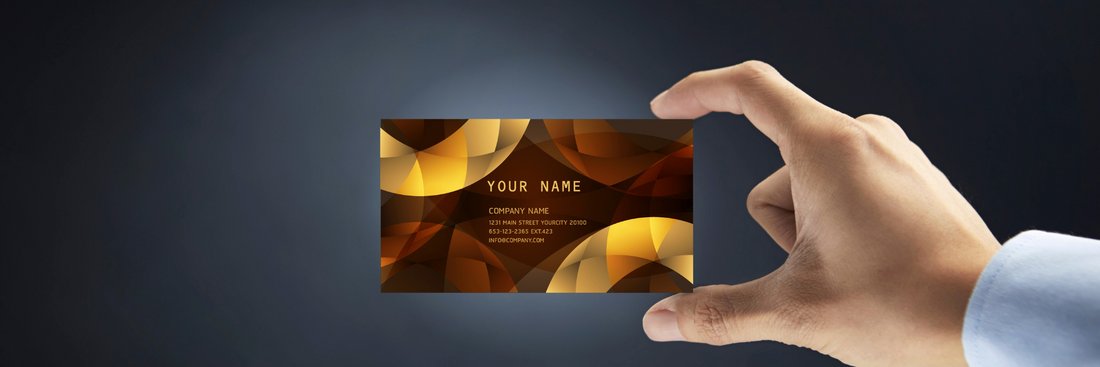While the digital landscape continues to evolve, the business card remains a vital tool in professional networking. More than just a provider of contact details, a meticulously crafted business card serves as a tangible extension of your brand identity. It conveys professionalism, fosters connections, and effectively communicates your message to potential partners. This comprehensive guide equips you how to design a business card that makes a lasting impression and strengthens your brand narrative.
-
Business Card Size Essentials
-
6 Stylish Business Cards Examples
-
10 Graphics Design Trends to Inspire Your Business's Visual Identity in 2025
Why Business Cards Still Matter in the Digital Age

In a world dominated by digital communication, it may seem that business cards are becoming obsolete. However, these small, physical pieces of cardstock play a significant role in the branding and networking landscape.
The role of business cards in branding
Business cards offer a tangible representation of your brand. Unlike digital communications that can get lost in an email inbox, a well-designed business card stays in hand. This physical presence makes it easier for people to recall your brand when they see your card again. Moreover, a business card can convey much about your professional persona through design, color, and quality, all of which contribute to creating a cohesive brand image.
Making a lasting first impression
The first impression is pivotal in business, and a business card can be a powerful tool in making it memorable. When handed the right card, a potential client or partner may gauge not only your name and position but also your professionalism and creativity. The tactile nature of a business card its texture, weight, and design can leave a lasting impression that a digital introduction lacks.
Combining traditional and digital business cards
While digital formats like vCards and LinkedIn connections are convenient, business cards can complement these tools. Consider creating a hybrid approach: include a QR code on your card that links to your online portfolio or LinkedIn profile. This way, you maintain the personal touch of a physical card while seamlessly bridging the gap to digital assets.
Step-by-Step Process to Design a Business Card

Step 1: Define Your Purpose and Audience
Before jumping into the design process, take a moment to clarify why you're creating this card:
- Why you're creating a card: Consider the primary reason for the card. Is it for networking at industry events, promoting a new service, or providing contact information for potential clients?
- Who you're giving it to: Identify your audience. Are you aiming at clients, business partners, or recruiters? Understanding who will receive your card will influence its design and content.
Step 2: Gather Essential Information
Once you know your purpose and audience, gather the key information you want to include on your card:
- Name, job title, company name: The most fundamental details that identify who you are and what you do.
- Contact details: Include your phone number, email address, business address, and, if applicable, your website URL to ensure easy communication.
- Logo and tagline (if available): These elements enhance brand recognition and tell viewers what you stand for or the value you offer.
Step 3: Choose the Right Size and Shape
Next, consider the dimensions of your business card:
- Standard sizes: Generally, business cards come in standard sizes such as 90x54mm or 3.5x2 inches, which fit well in wallets and cardholders.
- Shapes: While rectangles are the norm, don't hesitate to explore other shapes such as square or rounded edges, or even custom shapes that can help your card stand out from the crowd.
Step 4: Design Layout and Choose Colors
The design aspect is where your creativity can shine:
- Keep it clean and readable: Avoid cluttering your card with too much information. A simple, legible layout is more appealing and easier to digest.
- Brand-consistent colors and fonts: Use colors and fonts that reflect your brand identity. Consistency matters; having a cohesive look across all material strengthens brand recognition.
- Visual hierarchy for easy reading: Prioritize information so that the most important details are the most prominent. This ensures the recipient can quickly grasp who you are and how to reach you.
Step 5: Use the Right Design Tools
Now that you have your ideas, it's time to bring them to life using design tools:
- Canva: A user-friendly platform with numerous customizable templates, making it perfect for beginners.
- Adobe Express: Offers more advanced control and flexibility for those familiar with design software.
- MOO: Known for high-quality printing and unique card options, this site is ideal for those looking to make a professional impact.
Step 6: Proofread and Print
Before finalizing your card, ensure the information is accurate:
- Double-check spelling and contact info: Even a tiny typo can undermine your professionalism, so take the time to proofread thoroughly.
- Choose the right paper: Opt for a paper type that reflects your brand matte, glossy, recycled, or premium, depending on the impression you wish to convey.
- Set bleed, margins, and safe areas for printing: Ensure your design is printer-ready by adjusting these elements to prevent cut-off information and ensure the best possible.
Design Tips for a Memorable Business Card

Keep It Simple and Elegant
A successful business card should convey your professional identity at a glance. To achieve this:
- Avoid clutter. Aim for a clean layout that ensures essential details stand out. Too much information can overwhelm the recipient. Stick to the basics: your name, title, and contact information.
- Use white space wisely. Effective use of white space not only enhances readability but also draws attention to key elements of your card. Empty spaces can provide a sense of balance and help guide the reader’s eye through the design.
Add a Unique Element
To make your card memorable, introduce a unique element:
- Special print finishes: Consider finishes like foil stamping, embossing, or spot UV coating. These tactile qualities not only elevate the card's appeal but also create a sensory experience that sets your card apart from others.
- Add QR codes linking to your site or portfolio. This modern touch enables recipients to quickly access your digital presence, providing further information without cluttering the card itself.
Align with Brand Identity
Your business card is a tangible expression of your brand; it should reflect your business's values and aesthetics:
-
Consistent colors, fonts, and logos across materials. Ensure your business card matches your branding materials this consistency reinforces your brand identity and builds trust with potential clients.
Modern Trends in Business Card Design

Minimalist Designs
The trend towards minimalism continues to dominate the design world:
- Clean, neutral tones and bold typography. These elements convey professionalism and clarity, allowing your information to shine without distraction.
- Focus on core information. Limit yourself to the most important details, ensuring that card recipients can easily identify who you are and what you do.
Unique Shapes and Materials
Traditional rectangles are not your only option:
- Square, rounded corners, plastic, metal cards. Choosing a distinctive shape or material can make your business card memorable. A plastic or metal card not only feels substantial but signals modernity and innovation.
- Stand out with distinctive form. The more unique your card, the higher the likelihood it will be retained. Experiment with formats and finishes that resonate with your brand ethos.
Tech-Integrated Business Cards
Keeping pace with technology is essential in today’s fast-paced environment:
- Digital cards: Fast and convenient, digital business cards allow for easy sharing. They can be updated regularly, ensuring that your information is always current.
- NFC chips and QR codes for instant links. By incorporating these features, you provide recipients with instant access to your online profiles or portfolios, enhancing engagement beyond the initial interaction.
Common Mistakes to Avoid
Missing Key Information
A common pitfall is neglecting crucial details:
-
No job title, unclear contact details. Ensure that your role is clearly defined along with accurate contact information. This facilitates easy follow-up and connections.
Overly Complicated Design
Simplicity is key; avoid overthinking the design:
-
Too many fonts, colors, or elements. Stick to two or three complementary fonts and a limited color palette. A chaotic design can dilute your message and create confusion.
Poor Print Quality
Quality matters in every aspect of your business card design:
-
Low-res images, thin paper, bad finishes. Investing in high-quality materials and production ensures your business leaves a lasting impression. A flimsy card can give an impression of unprofessionalism.
Resources and Templates to Get Started
Starting your business card design journey can be made easy with a variety of resources:
- Canva template gallery offers a user-friendly platform filled with numerous customizable templates that allow you to create a professional-looking card without graphic design experience.
- Professional templates via Adobe Express provide access to high-quality designs that can be tailored to fit your brand identity.
- Custom print-ready cards from MOO are another excellent option, especially for those seeking unique, well-printed cards that can be tailored to your specifications.
Conclusion
In conclusion, your business card is a miniature billboard for your brand. By following this guide, you can create a card that sparks connections and leaves a lasting impression. Remember, clarity and professionalism are key. Design a business card that speaks volumes about you and your brand.




